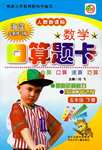题目内容
-Are all the telephone numbers ________ in the directory(号码簿)?
-I'm afraid not.
- A.to list
- B.listing
- C.listed
- D.being listed
句中的the telephone numbers和list之间为被动含义,故用过去分词作后置定语。

 培优口算题卡系列答案
培优口算题卡系列答案 开心口算题卡系列答案
开心口算题卡系列答案 口算题卡河北少年儿童出版社系列答案
口算题卡河北少年儿童出版社系列答案
| |||||||||||||||||||||||||||||||||||||||||||||||||||||||||||||||||||||||||||||||||||||||||||||||||||||||||||||||||||||||||||||||||||||||||||||||||||||||||||||||||||||||||||||||||||||||||||||||||||||||||||||||||||||||||||||||||||||||||||||||||||||||||||||||||||||||||||||||||||||||||||
Holiday Inns and McDonald’s. both saw unmatched growth in the 1960s. Their growth opened another direct business operation—franchising.
These operations have the same general pattern. The franchisor, the parent company, first establishes a successful retail business. As it expands, it sees a profit potential in offering others the right to open similar business under its name. The parent company’s methods and means of identification with consumers are included in this right. The parent company supplies skill, and may build and rent stores to franchisees. For these advantages the franchisee pays the franchisor a considerable fee. However, some of the advantages and disadvantages are different.
By extending a “proven” marketing method, a parent can profit in several ways. First, the franchisee’s purchase price gives the parent an immediate return on the plan. Then the sale of supplies to the franchisee provides a continuing source of profits. As new businesses are added and the company’s reputation spreads, the values of the franchise increases and sales of franchises become easier. The snowballing effect can be dramatic. Such growth, too, bring into play the economies of scale. Regional or national advertising that might be financially impossible for a franchisor with 20 franchises could be profitable for one with 40.
The parent, then, finds immediate gains from the opportunity to expand markets on the basis of reputation alone, without having to put up capital or take the risk of owning retail stores. Added to this advantage is a less obvious but material one, Skilled, responsible retail managers are rare. People who invest their capital in franchises, though, probably come closer to the ideal than do paid managers. In fact, the franchisee is an independent store operator working for the franchisor, but without an independent’s freedom to drop supplies at will. Of course the factory’s costs of selling supplies are less. But also certainly the franchisee buying goods that have had broad consumer acceptance will not casually change supplies, even when the contract permits. If the hamburger is not what the customer expected, they may not return. Having paid for the goodwill, the franchisee won’t thoughtlessly destroy it.
1. Franchising refers to a business operation in which a successful parent company .
|
A.sells name-brand goods to a private investor |
|
B.rents proven ideas and techniques for investment |
|
C.sells the right, the guidance to a business under its name |
|
D.takes no advertising responsibility for individual investors |
2.. The advantages of franchising to the parent company are all the following EXCEPT .
|
A.an immediate investment return |
|
B.the profit from the sale of supplies |
|
C.the ownership of additional retail stores |
|
D.the possibility of profitable advertising |
3. The passage mainly tells the reader .
|
A.the advantages and disadvantages of franchising |
|
B.the benefits of franchising to the franchisor |
|
C.the unmatched economic growth in the 1960’s |
|
D.some regional and national business operation |
4.. What will the author probably discuss after the last paragraph?
|
A.More advantages of franchising. |
|
B.Negative aspects related to franchising. |
|
C.The standard of consumer acceptance. |
|
D.Risks of investment besides franchising |
Grown-ups know that people and objects are solid. At the movies, we know that if we reach out to touch Tom Cruise, all we will feel is air. But does a baby have this understanding?
To see whether babies know objects are solid, T. Bower designed a method for projecting an optical illusion of a hanging ball. His plan was to first give babies a real ball, one they could reach out and touch, and then to show them the illusion. If they knew that objects are solid and they reached out for the illusion and found empty air, they could be expected to show surprise in their faces and movements. All the 16- to 24-week-old babies tested were surprised when they reached for the illusion and found that the ball was not there.
Grown-ups also have a sense of object permanence, We know that if we put a box in a room and lock the door, the box will still be there when we come back. But does a baby realize that a ball that rolls under a chair does not disappear and go to never-never land?
Experiments done by Bower suggest that babies develop a sense of object permanence when they are about 18 weeks old. In his experiments, Bower used a toy train that went behind a screen. When 16-week-old and 22-week-old babies watched the toy train disappear behind the left side of the screen, they looked to the right, expecting it to reappear. If the experimenter took the train off the table and lifted the screen, all the babies seemed surprised not to see the train. This seems to show that all the babies had a sense of object permanence. But the second part of the experiment showed that this was not really the case. The researcher substituted a ball for the train when it went behind the screen. The 22-week-old babies seemed surprised and looked back to the left side for the train. But the 16-week-old babies did not seem to notice the switch. Thus, the 16-week-old babies seem to have a sense of “something permanence,” while the 22-week-old babies had a sense of object permanence related to a particular object.
1. The passage is mainly about .
|
A.babies’ understanding of objects |
B.effects of experiments on babies |
|
C.babies’ sense of sight |
D.different tests on babies’ feelings |
2. In Paragraph 3, “object permanence” means that when out of sight, an object .
|
A.still exists |
B.keeps its shape |
C.still stays solid |
D.is beyond reach |
3.. What did Bower use in his experiments?
|
A.A chair. |
B.A screen. |
C.A film. |
D.A box. |
4.. Which of the following statements is true?
|
A.The babies didn’t have a sense of direction. |
|
B.The older babies preferred toy trains to balls. |
|
C.The younger babies liked looking for missing objects. |
|
D.The babies couldn’t tell a ball from its optical illusion. |